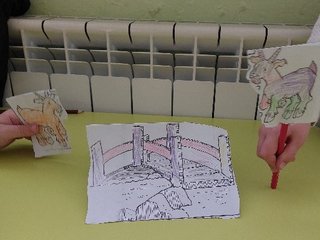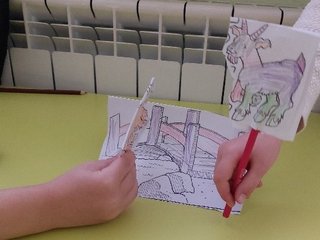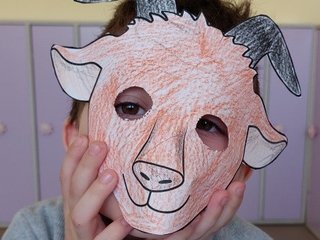“Group activities towards the formation of social and emotional skills in early childhood”
Sept. 3, 2022
Posted in:
Donika Dimitrova - psychologist
“Group activities towards the formation of social and emotional skills in early childhood”
Age group: 5-6 years old
Number of participants - 2-20 children; work in a third age group;
Educational field: Social world.
Core: Communication with others and self-affirmation.
Duration of the lesson: 30 min
Interaction methods:
- a musically moving game of "The Two Goats" - by Jean d Lafontaine(1).
- story role-playing game based on the fairy tale;
- brainstorming;
- making puppets for finger theater;
Subject:
"Self-affirming (assertive) behavior"
Purpose: the main purpose of the training is to increase social competence by acquiring and strengthening social-emotional abilities for successful interaction with others and reaching personal goals - training for confident behavior.
Sub-goals:
- Self-affirmation through persistence and assertiveness, instead of various forms of aggression and attacks.
Tasks:
- Training the child in constructive behavioral reactions in negative situations, through acceptable options.
- Building abilities for good relationships with others.
- Enriching the communication patterns of children who have communication difficulties and/or apply aggressive behavior patterns.
Expected results:
- Representations: the child has concrete ideas about the difference between insecurity, confidence and aggressiveness;
- Skills:
- the child masters ways of self-affirming behavior and conflict resolution skills
- learned behavior patterns, strategies and competencies;
- Relations:
- the child demonstrates a good attitude towards others and understands the experiences of others;
Course of the lesson:
- Reading the tale of "The Two Little Goats":
There was a narrow bridge over a mountain river. Two goats met in the middle of the bridge. They couldn't get away. One said: - Come back and let me go first! - Come back to you! I will go first - answered the other goat. Neither one nor the other gave way. They got angry and butted horns. From the impact, the kids slipped and fell into the water.
- Listening to a musically moving game "The Two Goats", which in a fun way . introduces the topic of the pedagogical situation and creates a favorable emotional environment.
- Role play - after the end of the presentation, the presenter divides the children into two groups - with each child sharing which goat they want to look like and why. The leader divides the children into pairs - one child from each group. They make horns with their hands or rest their hands above their heads, spread their legs, lean their body forward and try to push themselves off the imaginary bridge with their chests. They stand up and don't back down as long as they last.
- Brainstorming: the teacher poses a question and the children give their opinions and ideas:
4.1. First step – work towards awareness of the problem in the situation;
- analysis of the characters' actions;
- which words describe the kid's temperament
4.2. Step Two – What can we do to solve the problem?
Discussion of :
- the applicability of the possible solutions;
- introducing the idea of assertive and aggressive communication: "What would happen if..." helping children to reach ideas for assertive behavior.
- Conversation: summarizing what was learned and what happened- The lesson is “Coercion is not an effective way to deal with interpersonal conflict. ".
- Dramatization - making a finger theater from a paper template.
- Closing the training - the children get the opportunity to share the emotions of the experience with the other students, and the teacher receives feedback on how successfully the messages of the topic reached the children.
(1) The song is performed by the Children's Music and Dance Group "Margaritki", Stara Zagora Text: M. Dalgacheva Music: M. Shoselova, https://www.youtube.com/watch?v=zt7p2hmYa1E
(2) The image is taken from the Internet.
Return to blog



